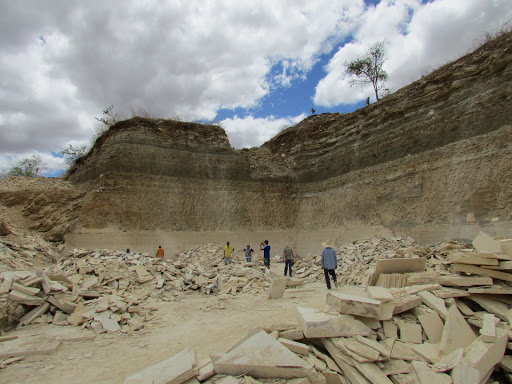 |
| Kururubatrachus gondwanicus Agnolin, Carvalho, Rolando, Novas, Xavier-Neto, Andrade & Freitas, 2020 illustration: Gabriel Lio |
Highlights:
• A new neobatrachian anuran coming from the Early Cretaceous (Aptian) Crato Formation from Brazil is described.
• Present record constitutes an important addition to the scarse fossils of Mesozoic anurans in South America.
• Present finding indicates that modern frog clades were well-diversified by 40 million years before the K/T boundary.
• In Patagonia, the K/T boundary does not accounts for a massive anuran extinction.
Abstract
The fossil record of anurans in South America is scarse, especially for Mesozoic-aged beds. The aim of the present paper is to describe a new neobatrachian anuran coming from the Early Cretaceous (Aptian) Crato Formation from Brazil. The specimen, represented by a nearly complete skeleton is reminiscent to the extant clade Hyloidea. In contrast with recent claims, this finding, together with previously known fossils from South America indicates that modern frog clades were present and well-diversified by 40 million years before the K/T boundary. In the same sense, the analysis of Mesozoic and Paleogene anuran record in South America contradicts the hypothesis of massive anuran extinction at the K/T boundary.
Keywords: Anura, Neobatrachia, Early Cretaceous, Crato formation, Brazil
Anura Fischer von Waldheim, 1813
Neobatrachia Reig, 1958.
Kururubatrachus nov. gen.
Etymology. Kururu, is the common name of a living species of South American toad (Rhinella schneideri) but also, according a legend of the tupí-guaraní culture, is the animal that brings the fire to humans during the creation of the world; batrachus is the Latin word for “toad”
Kururubatrachus gondwanicus nov. sp.
Etymology. The species name, gondwanicus, comes from the Gondwanan context of the Araripe Basin.
 |
| Skeletal reconstruction of Kururubatrachus gondwanicus nov. gen. et sp. (UFRJ-DG 08 A). Shaded areas indicate preserved bones of the holotype specimen. |
 |
| Holotype of Kururubatrachus gondwanicus nov. gen. et sp. (UFRJ-DG 08 A) |
Conclusions:
We describe here the new fossil and species of anuran Kururubatrachus gondwanicus nov. gen. et sp., coming from the Early Cretaceous (Aptian) Crato Formation from Brazil. The specimen, represented by a nearly complete and articulated skeleton belongs to Neobatrachia, and it is reminiscent to the extant clade Hyloidea. Further, a brief overview on the fossil record of anurans indicate that several relevant reports have been overlooked by previous literature (e.g., Báez and Gómez, 2017; Báez et al., 2009, 2012; Agnolin, 2012). These, reinforce previous ideas of an old diversification of neobatrachians deep in the Cretaceous period. As for example, in spite of the poor fossil record in Patagonia, members of Calyptocephalellidae appear to be abundant and well-diversified in the Maastrichtian. Further, the diverse fossil record of neobatrachians from Crato indicates that modern frogs were present and well-diversified by 40 million year before the K/T boundary, countering recent proposals that sustain a postK/T diversification of main modern anuran clades.
In addition, in spite of the sketchy fossil record, by Late Cretaceous times, members of Pipoidea and Calyptocephalellidae are well represented in Patagonia. Remarkably, both clades survive the K/T and remain relatively diverse and abundant during Paleogene times. This indicates that anurans from Patagonia (at least) were probably not strongly affected by the extinction event at the K/T boundary.
Federico Agnolin, Ismar de Souza Carvalho, Alexis M. Aranciaga Rolando, Fernando E. Novas, José Xavier-Neto, José Artur Ferreira Gomes Andrade and Francisco Idalécio Freitas. 2020. Early Cretaceous Neobatrachian Frog (Anura) from Brazil sheds light on the Origin of Modern Anurans. Journal of South American Earth Sciences. 101, 102633. DOI: 10.1016/j.jsames.2020.102633





